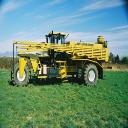Yahoo Answers is shutting down on May 4th, 2021 (Eastern Time) and beginning April 20th, 2021 (Eastern Time) the Yahoo Answers website will be in read-only mode. There will be no changes to other Yahoo properties or services, or your Yahoo account. You can find more information about the Yahoo Answers shutdown and how to download your data on this help page.
Trending News
What is necessary after replacing a computer hard drive?
Alright so my hard drive failed on my other computer. I'm planning on taking it in to get it replaced however I wouldn't want them to charge extra to reinstall Windows Vista, etc. I still have the Vista disk and I believe I still have all of the other disks that came with the computer, so I'd rather reinstall everything myself instead of having them charge me extra to do it.
I'm a little confused on what kinds of drivers I'll have to install; I'm honestly not even too sure what a "driver" really is. Are those other disks that came with the computer the drivers? Will my computer run without installing them? What exactly will I have to do if I simply have them replace the hard drive for me and do nothing else?
Thanks a lot :)
I actually was originally planning on replacing my hard drive myself but when I took apart the computer I couldn't find the actual hard drive; I found the plug that said "HDD Drive" and that was connected to the CD tray thing (not sure what it's called, sorry)- is that where it's supposed to be, or was I looking at something completely different? If I knew where to locate the hard drive I would be okay with putting it in myself so if anyone could help me out with that I would greatly appreciate it :)
Alright, this is all great info guys, keep it up! :D
Now I'm a little confused about what kind of hard drive I have. I google imaged it and it seems my hard drive is an IDE. It connects with a ribbon thing and has a lot of little holes in the plug. On Best Buy's website though I don't see any "IDE" category, and I've read that a lot of these terms are interchangeable. Would the "EIDE" category on Best Buy's website be what I'm looking for? Or would it be a Parallel ATA or an ATA? Ahhh so overwhelming!
Additionally, I still don't know if the CD Drive thing that I was messing with earlier when I took my computer apart is the actual hard drive that I'm trying to replace. Sorry if this doesn't make sense :(
9 Answers
- DrDaveLv 71 decade agoFavorite Answer
So why in the h are you gonna pay someone else to do a 10 minute job you could EASILY do yourself to begin with? Putting the hard drive in is the easiest part!You put the new drive in, you load windows, any drivers you need can be found at the pc mfgs website. Drivers for hardware you may have added can be found at the hardware mfgs website.
- ► HairSupply ◄Lv 51 decade ago
Since the disk is new which means no data on it, feel free to practice. Maybe a little bit trial and error. You have nothing to worry.
The CDs that came with your computer mostly contains the drivers needed for the hardwares. But make sure that all drivers are for Windows Vista.
You can download them on your hardware manufacturers website if drivers installation becomes a problem later.
Meanwhile, try installing Windows Vista on the new disk.
Feel free to add any additional comments here if you need further help
ADD:
dude, harddisk is something like this => http://giocomputer.com/store/images/seagate-barrac...
try find it out on your cpu
- Anonymous1 decade ago
Don't worry, replacing a hard drive really isn't rocket science once you get it figured out. First, I would definitely not recommend taking it in to any "professional" to get it replaced, I'm 17 years old and I've been building and repairing computers for a couple of years now, if you take it in to be changed they could charge you for basically whatever they want to bs you about (kind of like taking a car into a mechanic and you don't know much about cars so they take advantage of you).
First, find out what interface type of hard drive your computer uses (ex. IDE, SATA, ATA, etc.) After you are 100% positive you've figured this out, buy a hard drive online or wherever and pick out a good capacity (amount of storage) and shoot for a 7200 RPM hard drive (faster data transfer rate). Installing it is not very difficult, most likely the hard drive will come with instructions on installation, and it only consists of plugging and unplugging a few things, not too difficult.
Next, after you install the hard drive successfully, pop in your copy of windows vista (although I highly dis-advise you to use vista, it's horrible in my opinion) anyways, turn on your computer and hit F12 or whatever key it is for your computer to get into BIOS settings, set the boot priority to boot from CD before hard drive, and installing vista is pretty much just point and click from there.
After that, assuming you have windows vista completely installed, you will have to find a working computer with an internet connection and find the drivers for your computer online. Let me explain to you what a driver is though: a driver is what is used to tell windows how to communicate with the hardware in your computer, for example the speakers may not work even though they are installed until the proper driver is installed to tell windows how to "use" them or work with them, or you cannot use the wireless card until the driver is installed for that because windows doesn't know what the foreign object is or what it does/how to use it until the driver is installed for that. So anyways, to find the drivers for your computer, just get on google, and search for example: "Acer extensa 4420 drivers vista" in your case you would put the maker of your computer and the model number followed by drivers and the word vista, then in the search your manufacturers website may come up depending on your computer and you download the drivers for each device in your computer (video, sound, wifi, ethernet, etc.) The drivers will just be a .exe file that you double click and install. Oh, and yes, your computer will "run" with them, but you won't be able to do much, you'll see what I mean.
Anywho, that's basically the skinny on that, and if you have any questions or need any help, email me or message me, I'll help if need be.
You're welcome :)
- Mr. TLv 71 decade ago
Hard drives are easily removed & installed. Remove the side cover & locate the HDD. Remove the IDE or SATA cable & the power plugs. Slide out he HDD. Note the "Jumper" setting on the back side.
http://www.google.ca/imgres?imgurl=http://unplugg3...
Install the "Jumper" setting on the new HDD the same as the one removed. Install the HDD. Replace the side cover.
Remove the Ethernet cable from the computer. Click the power button & hold down the F8 key in order to enter the BIOS. Check the new HDD has been detected. Save & exit.
Install the Vista Disk & allow to load. Once you progress to the section on connection to the internet & automatic updates, decline until you the system is fully loaded & the computer restarts. Once the Desktop Screen appears allow the computer to fully load. Install your Antivirus software. Restart the computer & then connect Ethernet cable. Connect to the internet & switch on the auto updates. Allow all the automatic updates to install.
Most of the Drivers are installed once the system is installed. Click the start button & right click:
• My Computer
• Manage
• System Tools
• Device Manager
Go through the list by clicking the "+" next to the item, then Right click. Click "Update Driver".
Hardware Update Wizard will appear.
Click:
•This Time Only
• Next
• Install the Software Automatically
• Next
• Finish
ÕÕ
¿
~
- How do you think about the answers? You can sign in to vote the answer.
- 1 decade ago
Drivers are the software that go along with hardware (like video cards, etc.) that tell it how to function properly with your Operating System. Most devices will be supported by default in Windows.
I would recommend just buying a new hard drive and installing it yourself. It's not very difficult to do.
You should be able to install the new hard drive & then boot from your Vista disc & simply follow the instructions to install the Operating System. Most likely this will support your hardware & you will not have to install any special drivers. You can also upgrade the drivers later on by downloading them from the company's website.
- BBjoeLv 41 decade ago
Computer Hope ChatRoom:
http://www.computerhope.com/forum/index.php?action...
*That's not just his opinion about Vista, there were loads of complaints over Vista. So, people started switching back to Windows XP and waited to upgrade to Win7. Free Windows 7 Upgrades were being handed out by Microsoft. If you bought a new computer with Vista Home Premium or Higher OR bought a copy of Vista Home Premium or Higher, you were eligible for a similar version in Windows 7.
http://www.microsoft.com/windows/buy/offers/upgrad...
*You may want to consider volunteering at a Tech Place to understand this stuff. Or take a simple course about building computers.
*CD Drives are usually separate from the HardDrives. HardDrives are smaller than CD Drives. HardDrives are located below or above your Floppy Drive.
*IDE Hard Drives Look Like This:
http://www.flickr.com/photos/39334916@N02/36954343...
http://www.flickr.com/photos/abennett96/3471604691
http://www.youtube.com/results?search_query=how+to...
*SATA Hard Drives Look Like This:
http://www.flickr.com/photos/22051330@N06/21264438...
http://www.youtube.com/results?search_query=how+to...
*IDE and SATA, Side By Side:
http://attachments.techguy.org/attachments/156498d...
(ATA is IDE)
Windows detects any storage device, by default.
http://www.youtube.com/results?search_query=how+to...
During Startup, keep tapping a F key to enter Bios, change your boot order so, your Optical Drive (CD or DVD drive) boots first. Second should be HardDisk. F keys that may work... F1, F2, F8, F10, F12, Enter or Del during startup.
Device Manager has all of the devices.
If you see question marks, this means devices such as your free printer driver needs to be installed, in order for the printer to work. If you don't hear sound, you need a free sound driver for it to work and so on.
Device Manager Located In:
Start>Right Click Computer or My Computer>Left Click Properties>Hardware Tab>Device Manager
How to get drivers?
write down the name and model of your computer and find out which driver you need based on Device Manager question marks.
Next go to:
(look for the company that built your computer and search on their site for the right drivers)
If you have a recovery disk, it will already contain drivers.
Source(s): Work Experience and Research, 6years inside an actual computer. - ?Lv 51 decade ago
You should replace the hard drive yourself, unless there is a warranty issue.
You need drivers for the main chipset, network card, video card, and sound chipset or card. Install the first two, then install anti-virus, then the rest.
Source(s): XPerience - Anonymous1 decade ago
If you bought the system then you need to buy a new OS. You can NOT reinstall a system builders OS. It installs ONCE and locks to the hardware...







